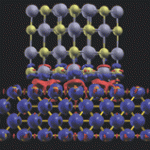 Any university involved in compute-intensive research would love to have a supercomputer at its disposal. Michigan Technological University is one of the fortunate ones to have a super-fast machine accessible by the entire research community on campus. The computer is known as “Superior” and we sat down with Gowtham S., Director of Research Computing at the University, to hear more about it.
Any university involved in compute-intensive research would love to have a supercomputer at its disposal. Michigan Technological University is one of the fortunate ones to have a super-fast machine accessible by the entire research community on campus. The computer is known as “Superior” and we sat down with Gowtham S., Director of Research Computing at the University, to hear more about it.
insideHPC: The system’s installation just had its one year anniversary. What are some of the current projects that are harnessing all of this power?
Gowtham S.: Modeling the circulation and particle transport in the Great Lakes system, multi scale modeling of advanced materials and structures, nanostructured materials for electronics, biosensing and human health implications, and unsupervised learning in Big Data and social networks are some of the on going projects that use the power of Superior. Here is the complete listing of all 30 projects.
These projects have produced nearly two dozen publications as well, and several proposals are underway for even more projects. That makes us quite happy.
Read the full interview at insideHPC.
This interview refers to three projects within the Department of Physics.
- Physics, Johana Chirinos, Investigations in ultra-high-energy cosmic ray physics
- Physics, Ranjit Pati, Computational study of charge and spin transport in nano-scale junctions from first-principles
- Physics, Ravindra Pandey, Computational studies of nanostructured materials for electronics, biosensing and human health implications